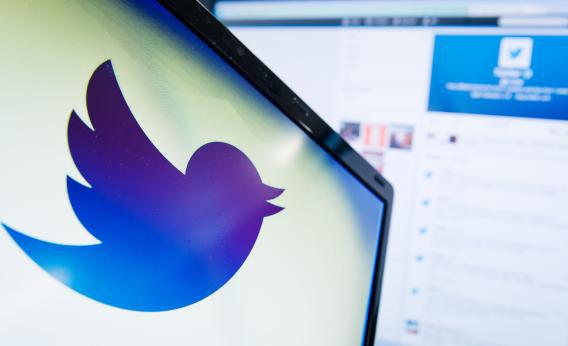As long anticipated, Twitter is going public. It almost goes without saying that the social network broke the news on Twitter. Its announcement came in five characters under the microblogging site’s 140-character cutoff:
The offering is expected to be the tech world’s largest since Facebook went public in May 2012. Analysts valued Twitter at $10 billion earlier this year, and it may be worth a little more than that today. But as my colleague Matt Yglesias points out, the fact that it is filing confidentially implies that its annual revenues have not yet reached $1 billion. Following the lead of Facebook and other Internet companies whose fortunes depend on an enormous user base, Twitter has been cautious about turning its service into a money-maker so far, with ads few and far between on the site. So how does it make money, and why might it be worth so much?
Like Facebook, Twitter makes its money primarily by selling ads, which gain a lot of their value from the advertiser’s ability to target specific groups of users. Twitter’s disadvantage relative to Facebook is scale: It has on the order of 200 million users, while Facebook has some 1.15 billion. But its advantage lies in timeliness and topicality. People check Facebook casually, when time allows. Twitter users tend to use Twitter quite actively, and in conjunction with specific events, like TV shows, rallies, concerts, and breaking news. So advertisers can craft ads tailored not only to a Twitter user’s general tastes and demographic profile, but to what that user is doing at the very moment they see the ad.
The fact that the company broke its own IPO news via Twitter—and saw the news retweeted by thousands of people within minutes—underscores the company’s growing role as a global source of breaking news and instant analysis. It is in some ways the CNN of the Internet—the key difference being that it costs CNN an awful lot of money to produce its content, whereas Twitter gets it all for free from users. A disproportionate share of those users are, in fact, paid journalists for other companies, including CNN. They use the platform enthusiastically, bordering on addictively, as a way to build their personal brands and draw readers to their own sites. The result is that Twitter today is valued at some $10 billion, more than five times as much as the New York Times*—and it has the potential to become more valuable still.
Equally important to its business prospects in the near term is Twitter’s role as a “second screen” that people check while watching TV. That gives advertisers a chance to play off of a program that it knows millions of people are watching, as Oreo did during this year’s Super Bowl. Meanwhile, Twitter has acquired two startups in the past year that analyze social-network activity related to TV programming, raising the possibility that Twitter could raise extra revenue by providing finely grained audience data to TV advertisers. And in May it launched a feature that lets TV advertisers target Twitter users who have just watched their commercials. That gives advertisers a clear path from showing a commercial on TV to getting potential customers onto their website—or, potentially, even selling them a product directly through Twitter.
Finally, Twitter is poised to be a big player in the fast-growing realm of mobile advertising. Just three days ago it splashed a reported $350 million to buy MoPub, the world’s largest mobile ad exchange, which allows advertisers to target users on their mobile devices. That might sound mundane, but in a blog post on Tuesday, former Facebooker Antonio Garcia argued that it actually makes Twitter “the most interesting company in advertising right now.” That’s quite an assertion, coming from the man who built Facebook’s own ad exchange. His full post is worth a read if you’re into this sort of thing, but in short, MoPub will give Twitter a platform through which to sell mobile ads that target users based on data that Twitter has collected from them on their desktop computers. That’s big, because the relatively sparse data available on users’ mobile phones has made such targeting difficult in the past.
In short, Twitter doesn’t make piles of money today, but it has the potential to become a much bigger player in the years to come, especially as people continue to do more of their social networking, news-reading, and shopping on their phones. For further background on the company’s evolution and prospects as a business, check out Joe Hagan’s comprehensive New York Magazine piece. It was written nearly two years ago, which translates to ages in Twitter years, but a lot of its predictions have been borne out in the time since.
*Correction, Sept. 12, 9:35 p.m.: This post originally stated that Twitter has been valued at about the same amount of money as the New York Times. Its valuation is more than five times the Times’ market capitalization.
